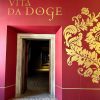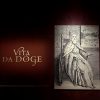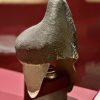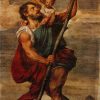Venice, Palazzo Ducale – The Doge’s Apartment
From 14 July, 2023 to 7 January, 2024
Curated by Valeria Cafà and Daniele D’Anza
Scientific coordination Chiara Squarcina
From 14 July 2023, the Doge’s Apartment is once again part of the exhibition route, open to all visitors to Palazzo Ducale – the Doge’s Palace – with a new set-up created to tell the more than thousand-year-old story of what was one of the most powerful and long-lasting institutional figures in Venice. The Serenissima elected 120 doges, from the first, Paoluccio Anafesto in 697, up to the abdication of Ludovico Manin – the last doge – in 1797.
The Doge’s Apartment was the most reserved heart of the Doge’s Palace. It enclosed representative spaces closed to the majority, reserved for meetings and restricted hearings, and was strategically located in the wing of the Palazzo between Rio della Canonica, the Scala d’oro and the Basilica di San Marco. The new set-up wants to present the figure of the doge to today’s public, documenting this fascinating story through a hundred paintings, sculptures, artefacts, maps and manuscripts and printed texts, ducal pledges and commissions, medals and coins.
The works – from the city heritage held by Fondazione Muve and not usually exhibited – tell the most important moments in the history of the doge institution. With precise didactic purposes, emphasis was placed on the great events but also on minor anecdotes and situations, on the rigid ceremonial etiquette, on insights (even lexical} and curiosities, starting right from the exhibited items.
The exhibition describes private and public stories, traditions, feasts and ceremonies which, as a whole, present the doge in a composite and at times unusual perspective, although always historically accredited, capable of giving an account of an all-round figure, inextricably linked to Venice and its long history.
THE DOGE
Once Head of State of Byzantine origin whose military features were already present in the title – doge derives from the Latin dux, military commander –, the doge became in Venice the official representative of the Serenissima in the eyes of the world. “Monsignor the Doge”, as he was called in public documents, was the symbol and incarnation of Venetian power, the protagonist of solemn public ceremonies, receptions and feasts.
His real power, however, was limited and controlled by the Venetian merchant aristocracy, while his person was under the constant supervision of the ducal councillors because, despite being the ‘Most Serene Prince’, he was and remained the first servant of the Republic, to all intents and purposes. Resorting to a perfect and straightforward synthesis, the doge was called Princeps in solemnitatibus, in curia senator, in urbe captivus, extra urbe reus [Prince in solemnities, senator in the senate, prisoner within the city, guilty outside the city].
THE ITINERARY
The starting point of the itinerary is the election of the doge (rooms 1-2): here the tools, the method, the symbols of the doge election are presented, accompanied by some anecdotes, such as the longest conclave, and traditional coronation ceremonies.
Next the theme of diplomacy and international relations, essential for the preservation and prosperity of Venice, is addressed in Sala Grimani (room 3).
The next room describes some of the most important battles fought by the Venetians, still preferring the life of the doge as an observation point: Sebastiano Venier for the battle of Lepanto (1571) and, for the beginning of the war of Candia (Crete), Francesco Erizzo, to whom the room of the apartment (room 4 – Sala Erizzo) is dedicated.
In the Sala degli Stucchi (room 5) the protagonist of the tale is the famous conspiracy of Baiamonte Tiepolo, the cause of the establishment of the extremely powerful Council of Ten, a body born out of the need to prevent rebellions and attacks against the state.
The following room (room 6) presents the figure of the doge as patron and supporter of the arts.
In the following rooms, instead, the more mundane and princely aspects of the doge’s life are explored: the relationship with the dogaressa (room 7), as well as the feasts and ceremonies that marked the calendar of the Serenissima (room 8).
The next room addresses the theme of the clothes worn by doge and dogaressa over the centuries. Garments are fundamental to give an account of the Byzantine origin of the doge institution and of the transformation of the doge into the “Serene Prince” (room 9). Even the death of the doge, to whom the next room is dedicated (room 10), is subject to a strict etiquette, always aware that “Se l’è mort el Doxe, no l’è morta la Signoria” [If the Doge is dead, the Signoria is not dead].
The itinerary ends into a room illustrating the events of the last doges and a focus on the last doge Ludovico Manin, whose abdication in 1797 corresponds to the fall of the Republic and the end of the history of the Serenissima (room 11).
Room 12 is dedicated to educational and in-depth study activities organized by the Educational Activities Office.














